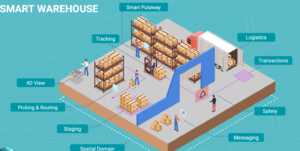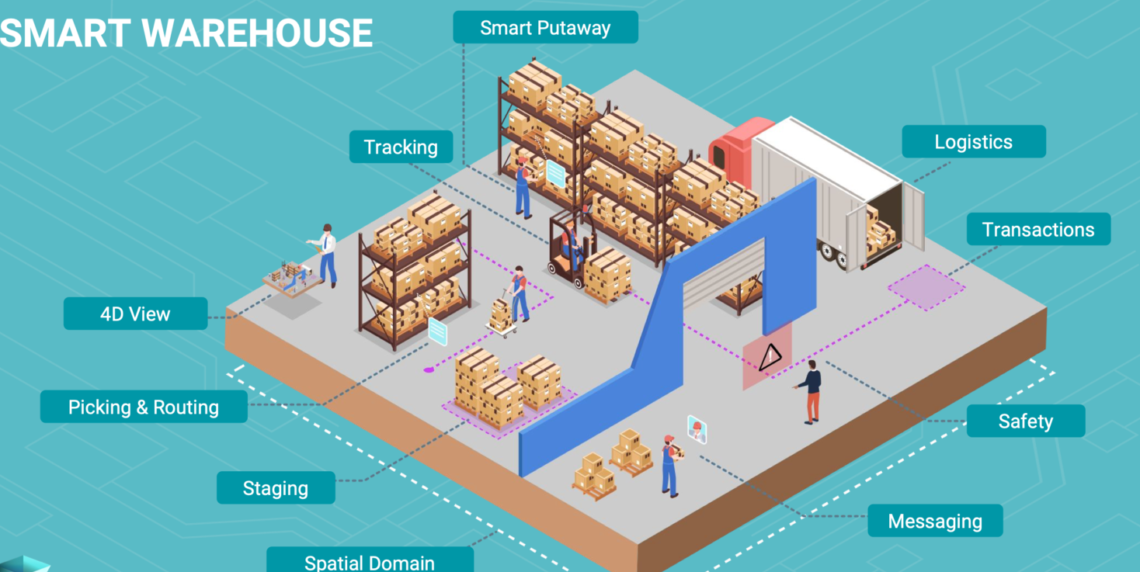 As we have seen in our previous blogs, the fourth industrial revolution promises to transform the entire manufacturing spectrum in the coming years entirely. However, manufacturing is not alone. Industry 4.0 shall have a transformational impact on supply chain management as well, especially warehousing operations. In this blog, we shall look at five ways Industry 4.0 shall affect warehousing operations for the better. Hope you find it interesting!
As we have seen in our previous blogs, the fourth industrial revolution promises to transform the entire manufacturing spectrum in the coming years entirely. However, manufacturing is not alone. Industry 4.0 shall have a transformational impact on supply chain management as well, especially warehousing operations. In this blog, we shall look at five ways Industry 4.0 shall affect warehousing operations for the better. Hope you find it interesting!
Warehousing: The Challenges Faced Today
Although automated warehouses have been around for a while, the adoption rate of next-gen technologies in the warehousing industry has been relatively lower. And thus, the challenges that warehouse operators have faced remained, more or less, the same. Fluctuation in demand, handling damaged goods, ensuring worker safety, avoiding accidents, product picking optimization, etc. have long affected a standard warehouse’s smooth operations.
However, as the accessibility, affordability, and perceived benefits of Industry 4.0 solutions continue to rise, we see an uptick in the investments warehouse owners make in such solutions. For instance, through Industry 4.0 adoption, it is expected that there will be an annual reduction of over 2.5% in inventory levels worldwide. Industry 4.0 can benefit warehousing by cutting costs and increasing efficiency, and Amazon is a great example. They have reduced 20% of operational costs by deploying 45,000 robots across its warehouses globally.
5 Ways Industry 4.0 Shall Impact Warehousing
Industry 4.0, an amalgamation of several technologies such as Machine Learning, Artificial Intelligence, the Internet of Things, etc., provides several use cases to tackle the challenges warehousing faces today. Let’s look at the five major ones:
- A smarter Warehouse Management System (WMS)
Most warehouses today do use a WMS. However, with the introduction of Industry 4.0, their scope will be amplified. The WMS shall act as the nerve center of a comprehensive digital ecosystem, collecting data ( through bar code scanners, RFID tags, etc.) and sending out instructions to an army of robots and mobile platforms. The human interface will be drastically reduced as each task would be controlled by the WMS automatically.
- Greater efficiency and accuracy through robots
Robots shall play a significant role in sorting and picking, and transporting goods from one place to another. Today, the tasks require a substantial human effort, pose a risk to labor, and are prone to errors shall be gradually replaced by robots. Robots use multiple sensors to gauge their physical environment and track the goods to be transported. With a correct understanding of the environment, they can accurately route their way through to the destination. Another benefit is that using robots, especially for the transportation of damaged and hazardous goods, prevents any injury to labor. Check out our line of robotics products here.
pose a risk to labor, and are prone to errors shall be gradually replaced by robots. Robots use multiple sensors to gauge their physical environment and track the goods to be transported. With a correct understanding of the environment, they can accurately route their way through to the destination. Another benefit is that using robots, especially for the transportation of damaged and hazardous goods, prevents any injury to labor. Check out our line of robotics products here.
- Voice Picking and Vision Picking via AR
Voice picking uses speech recognition technology to direct the human to the location of the product they need. This hands-free technology helps in avoiding the manual work of typing and getting the task done quickly. Vision picking using augmented reality uses AR app/glasses to allow the user to locate and scan objects with more accuracy. It will also help find any batch with accurate positioning, thus making a consequential impact on the warehouse and its efficiency.
- Smarter storage through IoT
Perishable goods and pharmaceuticals require optimum environmental conditions in storage. In the absence of which, the goods degrade and lose their value, causing a business loss. With sensors, you can monitor environmental factors such as pressure, humidity, light exposure, temperature, etc., to reduce wastage. This also leads to a reduction in the manual effort required.
- Increased equipment life through predictive analytics
Warehouse equipment such as train wheels, forklifts, etc. face wear and tear and require regular maintenance. If not serviced properly, they may be down for a long hampering the operations. To avoid downtimes and loss to business, sensors can be installed on such equipment to monitor the health of their parts such as the engine, motors, etc. Analytics can be used to predict when the parts or equipment may break down, and timely maintenance can be conducted.
Conclusion
These are just a few examples of how Industry 4.0 shall change the way warehousing is done. Warehouse owners and operators will definitely, be better off by adopting Industry 4.0 solutions for greater efficiency, lesser costs, enhanced safety, etc.
At Yantra, we are committed to solving the problems faced by warehousing through our advanced and innovative Automated Guided Vehicles and Robots. Stay tuned to our Knowledge Corner, as we outline the journey you, as a manufacturer, can undertake to become Industry 4.0 compliant.



